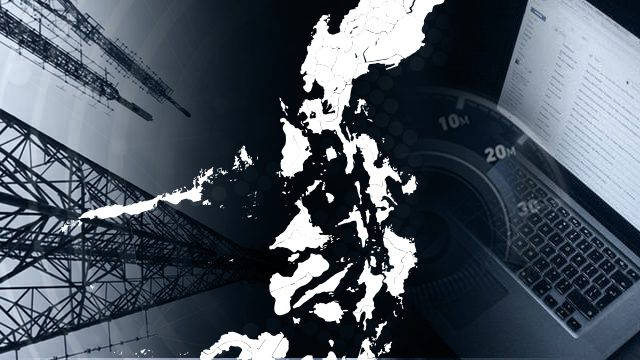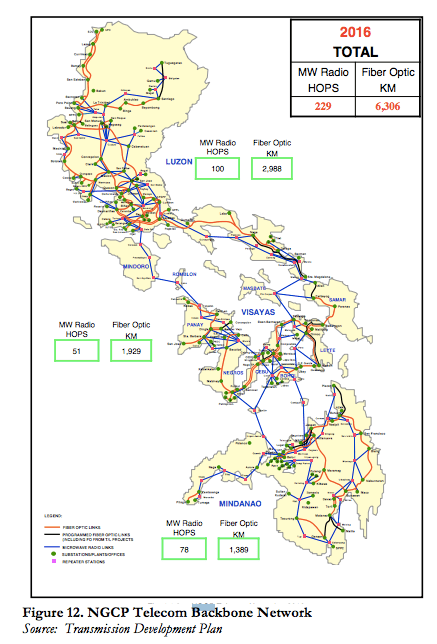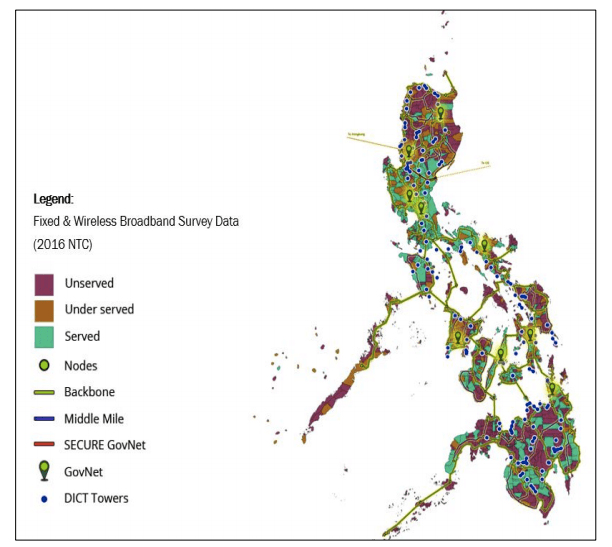SUMMARY
This is AI generated summarization, which may have errors. For context, always refer to the full article.

MANILA, Philippines – A proposed national broadband network by the Department of Information and Communications Technology (DICT) is expected to provide at least 10-Mbps connection to all households by 2020 at a much lower cost than today’s average of P1,299 per month.
This is the promise of DICT’s creation of a “north to south” broadband plan, which would cost around P77.9 billion, as stated in its draft blueprint. (READ: Here’s how much your broadband rates have dropped)
DICT Secretary Rodolfo Salalima said before the Philippine Telecom Summit 2017 in Pasay City that his department will conduct a feasibility study in the second quarter of this year, after President Rodrigo Duterte approved the blueprint of the national broadband plan last March 6.
“I assure you that the national broadband plan will not be a source for corruption. I instructed my undersecretary to put the draft blueprint online for transparency. If your inputs are very constructive, I may include that [in the plan],” Salalima told reporters. (The draft blueprint of DICT’s national broadband plan is found here)

The draft blueprint showed that other than PLDT Incorporated’s Domestic Fiber Optic Network (DFON) and Globe Telecom Incorporated’s Fiber Optic Backbone Network (FOBN), DICT could use the National Grid Corporation of the Philippines (NGCP) lines, which have about 5,000 to 10,000 fiber optic cables running from north to south.
“We may start negotiating also with the private corporation on how we can make use of this. This was once owned by the government,” Salalima told reporters.
NGCP holds a 50-year franchise to operate the country’s power transmission network. The group consists of Henry Sy Jr-led Monte Oro Grid Resources, Calaca High Power, and State Grid of China Corporation.
Faster, cheaper Internet for all
“Priority will be given to high population density areas where access to broadband internet is very limited or not present,” the draft blueprint read.
To serve these needs, DICT said the government will establish the Philippine Integrated Infostructure (PhII), which consists of international submarine cable landing stations, national government backbone, and the last mile access network.
The last mile covers countryside connectivity and access networks to government sites, public schools, state colleges and universities (SUCs), public hospitals and rural health units, disaster risk and reduction and management offices, peace and order units, among others.
Connection up to the ‘last mile’
To facilitate initiatives for the last mile, DICT considers 3 options:
- A service provider will install lines and provide internet services to end users and the government has the option to share the cost in the deployment
- A service provider will lease the utilization of the lines and provide internet services to end users
- The government will install the lines and provide direct internet services to end users
DICT said the government will build submarine cable landing stations in the country to “primarily provide bandwidth to drive government infostructure initiatives.”
Considering the investment needed for the infastructure, DICT said it may enter into a public-private partnership or a consortium-type arrangement.
DICT said the PhII will be expected to provide at least 10 Mbps to households by 2020 at a lower cost than today’s average of P1,299 per month.
The government earmarked P77.9 billion for 2017 to 2020 in the PhII implementation.
Salalima said the DICT plans to implement the national broadband network plan “next year” as it finalizes its study.
This is the second time the Philippines is attempting to build a national broadband network. In 2007, the project was abandoned after a corruption scandal. Then-president Gloria Macapagal Arroyo was accused of accepting bribes from Chinese firm ZTE Corporation in exchange for the contract.
Even before the DICT completes a feasibility study on its proposed national broadband network, Salalima said it has already piqued the interest of “top two Chinese suppliers” and other foreign firms.
Asked before if ZTE is one of them, Salalima replied: “Your guess is as good as mine.”
Players in unserved, underserved areas
Salalima said the proposed national broadband network is seen to “entice existing and new market players to invest in unserved and underserved areas.”

Globe Telecom, Incorporated had earlier asked the Duterte administration to set up submarine cables in far-flung areas then rent these out to telcos. Each submarine cable costs about $30 million to $35 million. (READ: Globe wish list for Duterte: submarine cables, less red tape)
Globe has called for the amendment of the Local Government Code to expedite issuance of all relevant permits for all telecommunication facilities at the local level.
For Globe Chief Information and Technology Officer Gil Genio, bureaucratic red tape causes significant delay in securing various permits from the local government units concerned relating to the construction of telco infrastructure such as cell sites.
Genio said Globe has a backlog of 3,000 cell sites due to permit issues.
PLDT and Smart Communications chief information and technology advisor Joachim Horn echoed his remarks, saying among the challenges of telcos in providing better service is bureaucratic red tape.
“We are fully committed to bringing advanced communications and digital services to the country. We hear you, and we are working to fix these issues,” Horn said before the summit.
Both PLDT and Globe had long expressed support for DICT’s national broadband plan.
Salalima, who previously worked for Globe, said the proposed network will help solve the country’s internet woes and entice more players in the telco industry.
“To prospective operators, just file your application for authorization with the National Telecommunication Commission. I welcome you. This government welcomes you with open arms. You are most welcome in the service of the Filipino,” the DICT chief said before the summit. – Rappler.com
Add a comment
How does this make you feel?
There are no comments yet. Add your comment to start the conversation.